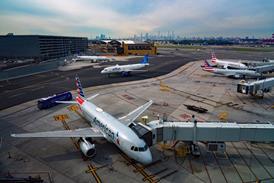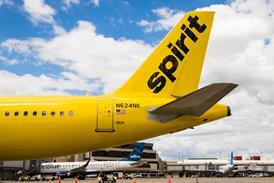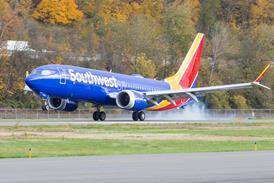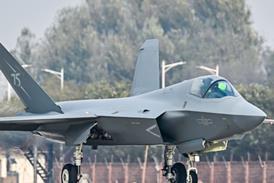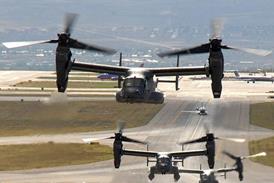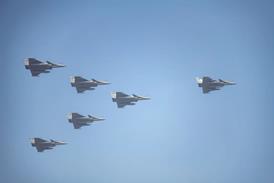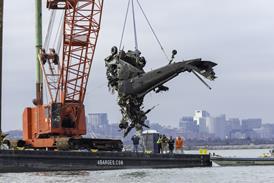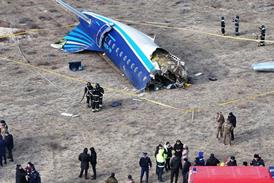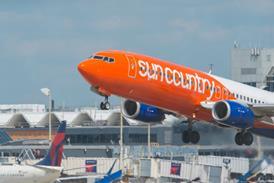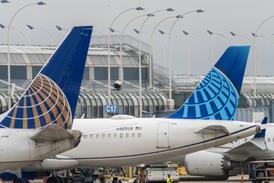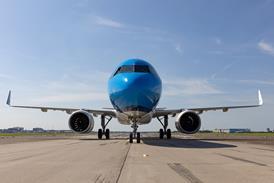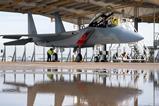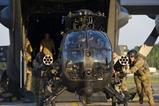Defence manufacturer Lockheed Martin will not protest the US Air Force’s (USAF’s) selection of rival Boeing to build the service’s first sixth-generation fighter.
Lockheed chief executive James Taiclet announced the decision on 22 April during a call with investors, saying the company does not plan to file a formal appeal – known as a protest in Pentagon parlance – challenging the outcome of the Next Generation Air Dominance (NGAD) contest.
“We are not going to protest the NGAD decision of the US government,” Taiclet says.
That decision cements the NGAD win for Boeing, which will provide hundreds of billions of dollars in revenue to the airframer’s fighter manufacturing business over the coming decades.
Boeing prevailed in the NGAD competition in March, with the company’s winning design being dubbed the F-47 by the air force. Lockheed was widely believed to be the second finalist in the highly-classified programme, although that has not been confirmed by the Pentagon.
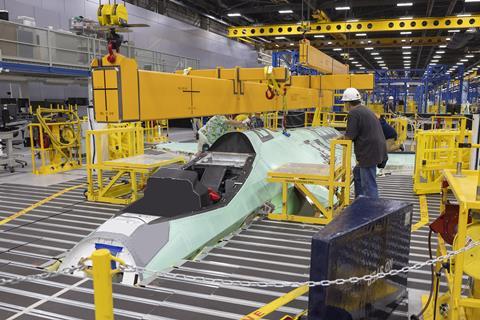
Former air force secretary Frank Kendall estimated that each F-47 will ultimately cost the Pentagon between $200 million and $300 million to produce. There have been no public comments regarding the planned fleet size.
Lockheed’s decision to move on from NGAD is significant. Protests have overturned major procurement decisions in the past – perhaps most notably when Boeing itself used the tactic in 2008 to reverse a win by Northrop Grumman to produce a new USAF tanker.
Boeing prevailed in the second decision, ultimately producing the company’s troubled KC-46 Pegasus refueller.
While Lockheed will not seek to overturn the NGAD decision, the company does not plan to write off its investment in the programme, which includes the development of an airworthy prototype.
The USAF confirms that two prototype aircraft have been secretly flying for the past five years, accruing “hundreds of hours” of flight time, according to air force chief of staff General David Allvin.
Taiclet says Lockheed now plans to fold technology from that as-of-yet unnamed demonstrator into the F-35, 1,100 of which are in frontline service globally, and F-22 platforms.
“We are moving forward and moving out on applying all the technologies that we developed for our NGAD bid onto our embedded base of F-35 and F-22,” the CEO notes.
While the US-only F-22 fleet is no longer growing, the Pentagon continues to update and modernise the iconic air superiority fighter to serve alongside the newer F-35s. That effort includes improved engine performance, onboard sensor upgrades and a new infrared threat detection system.
Meanwhile, Lockheed projects the global F-35 fleet eventually growing to more than 3,500 aircraft, offering ample opportunity for subsequent versions to incorporate sixth-generation technologies developed under the NGAD effort.
Taiclet, himself a former USAF fighter pilot, says his aim is to deliver sixth generation-adjacent capability to the F-35, at a fraction of the cost expected for the new Boeing F-47.
“My challenge to my aeronautics team is, let’s get 80% of the sixth-gen capability at half the price,” Taiclet reveals.
A conventional take-off and landing F-35A currently costs around $80 million.
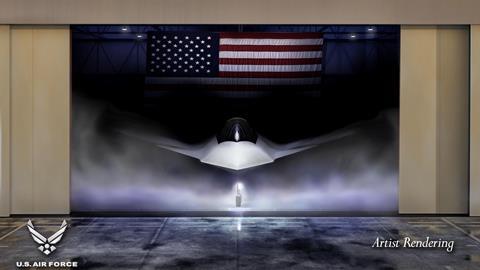
Taiclet says such an approach will allow Lockheed to “supercharge” the F-35 for operations well into the latter half of the century, describing the result as a “fifth-generation-plus concept”.
Boeing has taken a similar approach with its legacy F-15 design, adding modernised features such as fly-by-wire flight controls and an enhanced electronic warfare survivability system to create the F-15EX, which the company describes as 4.5th-generation fighter.
However, before Lockheed can roll out its supercharged F-35, the company still needs tackle long-running challenges with the delayed Technical Refresh 3 (TR-3) update for the stealth jet. That package of new software and onboard computers is meant to enable subsequent upgrades to the F-35’s weapons, sensors and communications known collectively as Block 4.
Delays in certificating TR-3 led the Pentagon to halt F-35 deliveries for a full year. While those have since resumed, jets running the TR-3 configuration are still not approved for full combat use.
Lockheed’s newly installed chief financial officer Evan Scott says the company is “making good progress on TR-3 stability and incremental capability releases”, without offering a prediction for eventual certification.
Last October, Taiclet said 95% of TR-3 combat capabilities had been “validated” with the testing of additional capabilities “progressing”.
Nearly a year ago, auditors with the US Government Accountability Office predicted the new systems would not be fully ready until sometime in 2025.
Lockheed continues to handover F-35s above its production rate of 156 aircraft annually, owing to the glut of finished jets built up during a year-long delivery pause.
Scott says the company expects to turnover between 170 and 190 of the single-engined fighters in 2025 – a sharp rise from the 110 aircraft delivered in 2024, several months of which fell during the Pentagon’s freeze.
Lockheed has a current F-35 backlog of 360 jets, with no plans to adjust the current production rate.


